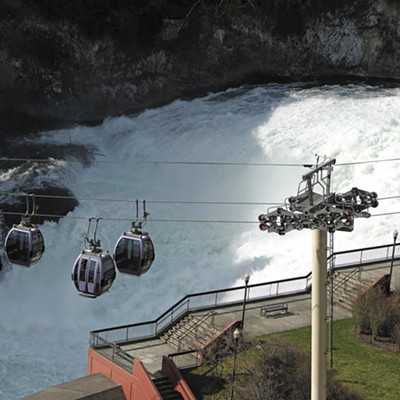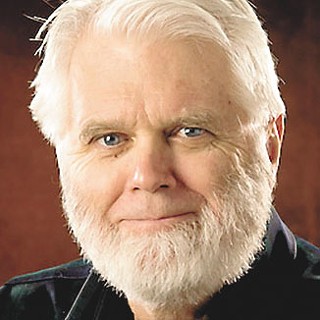Not "Just" a Plan
[
{
"name": "Broadstreet - Instory",
"insertPoint": "5",
"component": "25846487",
"requiredCountToDisplay": "5"
},{
"name": "Broadstreet - Instory",
"insertPoint": "10",
"component": "25846487",
"requiredCountToDisplay": "10"
},{
"name": "Broadstreet - Instory",
"insertPoint": "15",
"component": "25846487",
"requiredCountToDisplay": "15"
},{
"name": "Broadstreet - Instory",
"insertPoint": "20",
"component": "25846487",
"requiredCountToDisplay": "20"
}
]
Dick Cheney came to town and reminded us all that America is in a "War on Terror." But I bet you didn't know that our very own Mayor Dennis Hession and his bureaucracy have declared a "War on Amenities." You see, our mayor has apparently decided that the Comprehensive Plan is about amenities, which, while nice to have, aren't all that important.
Acting as the alter ego to his engineering department, which in turn does double duty as the alter ego to this useless, meddlesome and expensive committee known as the Citizens Street Advisory Committee (CSAC), Hession says that the Comprehensive Plan was never intended to direct public policy and decision-making. Rather it was always to be considered "just a plan" -- meaning that the city can follow it or not follow it, depending on which way the bureaucratic winds are blowing.
The Comprehensive Plan was no lark: State law required that it be developed, approved and followed. Nor is the Comp Plan about "amenities." It's about urban design. The expectation is that with good urban design, amenities will surely follow.
This dispute has all come to a head over the implementation of the new street improvements paid for by the huge street bond that passed a year and a half ago. You can argue, incorrectly I believe, that the street bond issue doesn't permit the city to improve streetscapes. But you can't argue that the street bond allows the city to degrade existing streetscapes through heavy-handed paving operations, as overseen by the mayor, his minions and the CSAC -- a committee, I might point out, that was established by former Mayor Jim West only to help market his street-bond proposal. (In other words, the CSAC has now outlived its usefulness.)
& lt;span class= & quot;dropcap & quot; & B & lt;/span & y failing to accept that the Comprehensive Plan is the city's means of establishing its urban design policies and goals, our mayor finds himself sitting by while his traffic engineers (who have never seen an urban design plan that even caught their interest) appear not only ready to mess up streetscapes all over town, but also, perhaps, to jeopardize the critically important Kendall Yards project, which fits perfectly into the Downtown Plan, which itself was written to complement the Comprehensive Plan.
I refer to the engineers' nascent plans to address what they see as an emerging traffic circulation problem along Monroe Street, given the prospect of the Kendall Yards project together with the Post Street Bridge closure. While no official proposal has been brought before the Public Works Committee, sources inside City Hall confirm that a version of the old and discredited Lincoln Street couplet proposal is back on the table at least in the form of a template. Unable to give up the idea of this couplet, which served as the justification for the Lincoln Street Bridge, our regional engineers, only a year after the bridge was defeated, came up with the idea to recreate a couplet on the north riverbank. Let's just swing northbound traffic from the Monroe Street Bridge over to Lincoln, make both Monroe and Lincoln one-way streets, and -- presto! -- we have our couplet, with "flow" all the way up to Francis.
Faced with sharp neighborhood opposition, the Spokane Regional Transportation Commission added, at the 11th hour, "Alternative Five" as another solution to the perceived North Monroe problem. While maintaining the couplet template, "Alternative Five" also maintains two-way traffic, both on Monroe and Lincoln. For now, this appears to be the preferred plan.
But make no mistake, today's "better traffic flow" -- even if two-way streets are preserved for now -- could easily become tomorrow's couplet.
& lt;span class= & quot;dropcap & quot; & B & lt;/span & ut not so fast, says Marshall Chesrown. It seems these decisions will have major impacts on his new, mixed-use Kendall Yards development slated for the north bank of the Spokane River west of Monroe. Chesrown is interested in making Kendall Yards as pedestrian-friendly and downtown-oriented as possible.
Our traffic engineers no doubt have totaled up all those cars coming to Kendall Yards and, by way of making their case for "better flow," have assumed that these cars need help "flowing." While Kendall Yards will produce more cars, it doesn't follow at they will be used for downtown transportation -- the idea is that you'll be able to walk to work or take a short ride on public transportation. In any case, our engineers have a long record of overestimating traffic problems. Remember the "flow" disaster the engineers predicted would happen if the Lincoln Street Bridge project wasn't completed before we shut down Monroe? The bridge wasn't built and Monroe was shut down for years. And the congestion? It never happened.
We know that people who move to Kendall Yards will be seeking an urban lifestyle. Instead of planning new couplets, what we should be talking about is better public transit. A fleet of our phony trolleys, free throughout the city, from the Spokane County Courthouse to the hospitals, from Browne's Addition to the Riverpoint Campus -- that would do the trick.
Whether the issue is about streetscape on Bernard or how best to make Kendall Yards pedestrian-friendly, we are left with the question: Do the traffic engineers and their always questionable analyses regarding "flow" instigate urban design, or should urban design determine how flow is to be managed? If the Comprehensive Plan is to work as the city ordinance and state law mandate it should, then urban design wins out. If the mayor continues to assert that the plan is "just a plan," concerned as it is only with "amenities," then "flow" wins out. It's pretty much that simple.
Acting as the alter ego to his engineering department, which in turn does double duty as the alter ego to this useless, meddlesome and expensive committee known as the Citizens Street Advisory Committee (CSAC), Hession says that the Comprehensive Plan was never intended to direct public policy and decision-making. Rather it was always to be considered "just a plan" -- meaning that the city can follow it or not follow it, depending on which way the bureaucratic winds are blowing.
The Comprehensive Plan was no lark: State law required that it be developed, approved and followed. Nor is the Comp Plan about "amenities." It's about urban design. The expectation is that with good urban design, amenities will surely follow.
This dispute has all come to a head over the implementation of the new street improvements paid for by the huge street bond that passed a year and a half ago. You can argue, incorrectly I believe, that the street bond issue doesn't permit the city to improve streetscapes. But you can't argue that the street bond allows the city to degrade existing streetscapes through heavy-handed paving operations, as overseen by the mayor, his minions and the CSAC -- a committee, I might point out, that was established by former Mayor Jim West only to help market his street-bond proposal. (In other words, the CSAC has now outlived its usefulness.)
& lt;span class= & quot;dropcap & quot; & B & lt;/span & y failing to accept that the Comprehensive Plan is the city's means of establishing its urban design policies and goals, our mayor finds himself sitting by while his traffic engineers (who have never seen an urban design plan that even caught their interest) appear not only ready to mess up streetscapes all over town, but also, perhaps, to jeopardize the critically important Kendall Yards project, which fits perfectly into the Downtown Plan, which itself was written to complement the Comprehensive Plan.
I refer to the engineers' nascent plans to address what they see as an emerging traffic circulation problem along Monroe Street, given the prospect of the Kendall Yards project together with the Post Street Bridge closure. While no official proposal has been brought before the Public Works Committee, sources inside City Hall confirm that a version of the old and discredited Lincoln Street couplet proposal is back on the table at least in the form of a template. Unable to give up the idea of this couplet, which served as the justification for the Lincoln Street Bridge, our regional engineers, only a year after the bridge was defeated, came up with the idea to recreate a couplet on the north riverbank. Let's just swing northbound traffic from the Monroe Street Bridge over to Lincoln, make both Monroe and Lincoln one-way streets, and -- presto! -- we have our couplet, with "flow" all the way up to Francis.
Faced with sharp neighborhood opposition, the Spokane Regional Transportation Commission added, at the 11th hour, "Alternative Five" as another solution to the perceived North Monroe problem. While maintaining the couplet template, "Alternative Five" also maintains two-way traffic, both on Monroe and Lincoln. For now, this appears to be the preferred plan.
But make no mistake, today's "better traffic flow" -- even if two-way streets are preserved for now -- could easily become tomorrow's couplet.
& lt;span class= & quot;dropcap & quot; & B & lt;/span & ut not so fast, says Marshall Chesrown. It seems these decisions will have major impacts on his new, mixed-use Kendall Yards development slated for the north bank of the Spokane River west of Monroe. Chesrown is interested in making Kendall Yards as pedestrian-friendly and downtown-oriented as possible.
Our traffic engineers no doubt have totaled up all those cars coming to Kendall Yards and, by way of making their case for "better flow," have assumed that these cars need help "flowing." While Kendall Yards will produce more cars, it doesn't follow at they will be used for downtown transportation -- the idea is that you'll be able to walk to work or take a short ride on public transportation. In any case, our engineers have a long record of overestimating traffic problems. Remember the "flow" disaster the engineers predicted would happen if the Lincoln Street Bridge project wasn't completed before we shut down Monroe? The bridge wasn't built and Monroe was shut down for years. And the congestion? It never happened.
We know that people who move to Kendall Yards will be seeking an urban lifestyle. Instead of planning new couplets, what we should be talking about is better public transit. A fleet of our phony trolleys, free throughout the city, from the Spokane County Courthouse to the hospitals, from Browne's Addition to the Riverpoint Campus -- that would do the trick.
Whether the issue is about streetscape on Bernard or how best to make Kendall Yards pedestrian-friendly, we are left with the question: Do the traffic engineers and their always questionable analyses regarding "flow" instigate urban design, or should urban design determine how flow is to be managed? If the Comprehensive Plan is to work as the city ordinance and state law mandate it should, then urban design wins out. If the mayor continues to assert that the plan is "just a plan," concerned as it is only with "amenities," then "flow" wins out. It's pretty much that simple.


















